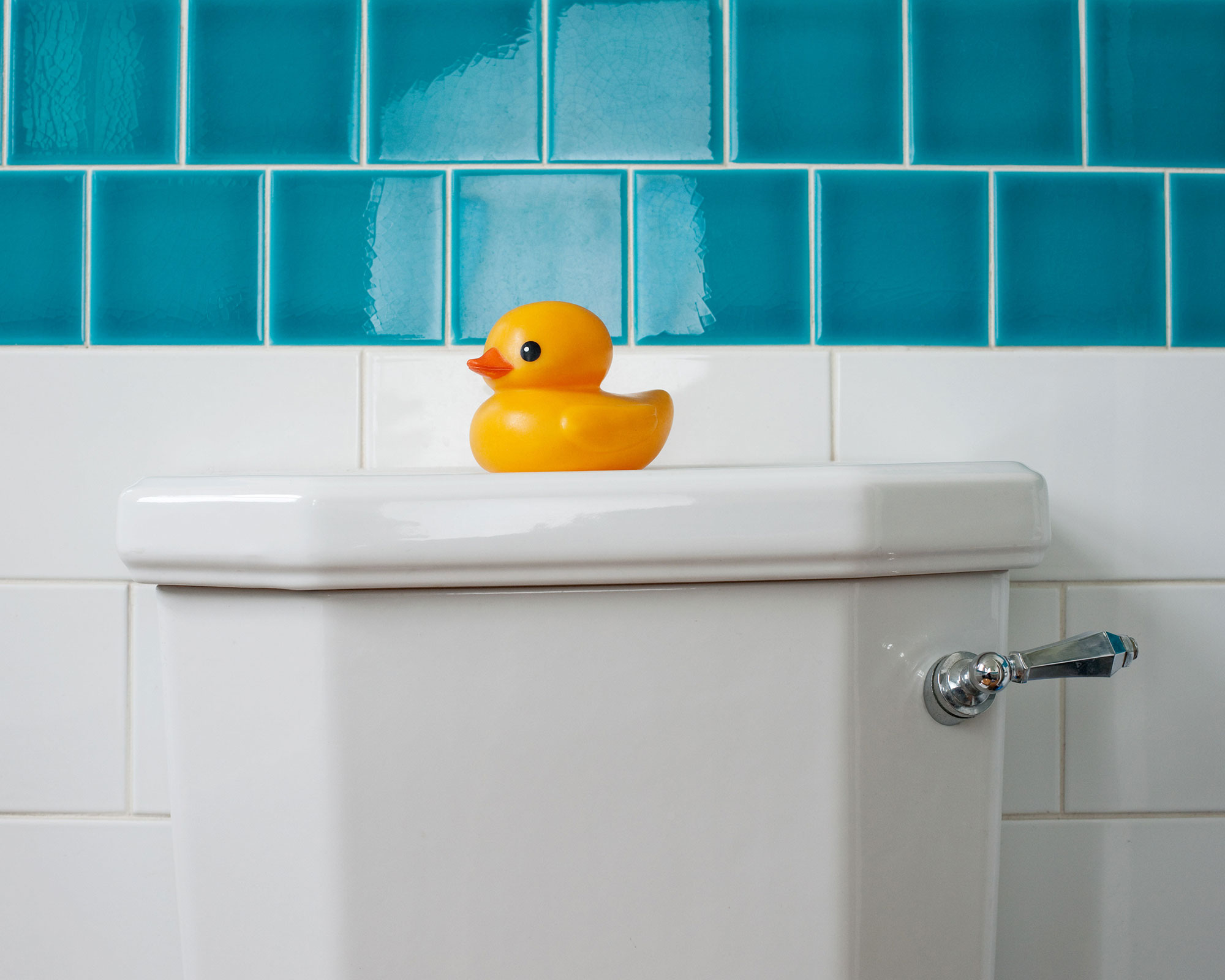How to fix a running toilet – in 6 simple steps
When any toilet develops a water-wasting fault, you must act quickly to avoid spiralling costs. Luckily the issue is often easily solved – follow our expert guide to diagnose the problem and fix it fast


If the water in your toilet keeps running long after you have flushed, chances are there’s a problem inside the cistern. ‘Water constantly running into the toilet pan is both annoying and a waste of water, which is bad for the planet and your wallet,’ says Paul Dwyer, managing director of Thomas Crapper & Co.
Before you dial a plumber, it’s worth trying a few reasonably simple techniques to see if the fault is easier to remedy than you might imagine. Fortunately, the issue will generally be at the cistern end of things, so there’s no need to face the grim prospect of getting up close and personal with the pan. However, if the water levels in the pan are rising, you may also need to consider how to unclog a toilet without a plunger.
Here, we’ve collated the simplest solutions for anyone keen to learn how to fix a running toilet and ensure beautiful bathroom ideas aren’t ruined by this common fault. Our expert guide includes plenty of tips you can try, but if the toilet is still running, you will need to call in a professional.
How to fix a running toilet
There are three main areas of interest when it comes to detecting faults that may be causing a running toilet; the height of the overflow, the inlet valve and the flush (outlet) valve. Here is how to fix a running toilet.
1. Open the cistern
If you have a standard toilet with a visible cistern, simply lift off the lid of the cistern and place it somewhere flat and out of the way so it won’t get damaged. Toilets with concealed cisterns, like back-to-the-wall or wall-hung designs, will usually have an access point for maintenance. This could be behind screw-off tiles or panels, or the flush-plate itself, which can be levered off the wall to reveal the cistern behind.
2. Seek out the fault
To ascertain what the problem might be, first flush the toilet and see what happens to the water and mechanisms inside the cistern. Pay particular attention to the inlet valve, which is the main part with the float attached. If the float is working properly, i.e. shutting off the water when it reaches the fill line, then you’ll need to turn your attention to the flush (outlet) valve, which is the part connected to the flush button.
3. Adjust the overflow height
Many modern cisterns have height-adjustable overflow pipes, which prevent water from spilling out onto your bathroom floor in the event of a problem. If the overflow pipe is lower than the fill level in the cistern, the water will keep pouring down it, resulting in a slow but continuous trickle into the pan. Raising the overflow pipe should be a simple twist-and-pull adjustment, sometimes with a locking pin to hold it in place.
Design expertise in your inbox – from inspiring decorating ideas and beautiful celebrity homes to practical gardening advice and shopping round-ups.
4. Clean the inlet valve
‘Inlet valves operate on a relatively simple basis. The valve opens when the toilet is flushed and the float drops, as the cistern refills the float rises and closes off the inlet valve,’ explains Paul Dwyer, Managing Director of Thomas Crapper & Co. The float mechanism is particularly susceptible to dirt and grit, or even a build-up of limescale in hard water areas; and this can cause the valve or flapper effectively to be permanently open, thus causing the water to overfill the cistern and overflow into the WC pan.
‘If you see this problem in your cistern, it should prove relatively easy to remove the valve and clean it. Please ensure that you turn off the water supply to the cistern first. If you do not feel happy about attempting this yourself, then any competent plumber should be able to help you,’ adds Paul Dwyer.
Drain the cistern completely then remove the valve using a spanner and some grips and loosen the nuts that connect it to the cistern. If the valve is beyond cleaning, you can usually buy a spare part in a universal size and install it in reverse. Take the component to your local plumber’s merchant and ask for a like-for-like replacement.
5. Check the flush valve
If your toilet is still running, the next likely culprit is the flush valve. ‘Typically, the problems are caused by the cistern flush button being incorrectly installed and putting pressure on the flush valve, allowing it to constantly run. Or there could be worn and damaged seals at the base of the flush valve, once again allowing water to run into the WC pan,’ explains Paul Dwyer.
If the flush valve has been incorrectly installed, you may be able to make adjustments – many modern systems offer easy adjustment with a flat head screwdriver or twist-and-pull components. If you have another toilet with the same cistern style, it’s worth having a look inside to see if you can spot any obvious differences.
If the flush valve is damaged, and cleaning the seals doesn’t help, replacement is the best chance of success. It’s important to get the same type and size, or a very close match. The easiest solution is to buy one made by the same manufacturer as your cistern, most will have a vast catalogue of spare parts – contact them to get the exact product code.
Replacement requires shutting off the water supply and draining the tank. You will then need to loosen all connections gently lift it out, and then switch in the new product, reconnect the water and refill the cistern. It is a fiddly job and may be best left to a professional, especially if you don’t have access to a secondary toilet if things go wrong!
6. Try flushing
Once you have checked out and hopefully fixed any potential problems, it’s time to see if your actions have worked. Flush the toilet a couple of times and look closely into the bowl to see if any water is still pouring down the sides; you may be able to hear the water even if it’s hard to see. If there is no water evident, your problem is solved but if there is still running water, it’s probably time to admit defeat and call in a certified plumber.
Will a running toilet increase my water bill?
Flushing the toilet accounts for 20% of household water consumption, so even a slow-running toilet will soon bump up your water bill.
Before you call a plumber to fix a running toilet, always lift the lid off your cistern to check for an obvious problem first. It can often be something simple and easy to fix. It may be a slight adjustment to the valve supplying your cistern’s water that's all that’s needed. This is often the case with cisterns that fill too quickly or don’t fill up enough. Checking this first could save you a hefty call-out fee.
Linda graduated from university with a First in Journalism, Film and Broadcasting. Her career began on a trade title for the kitchen and bathroom industry, and she has worked for Homes & Gardens, and sister-brands Livingetc, Country Homes & Interiors and Ideal Home, since 2006, covering interiors topics, though kitchens and bathrooms are her specialism.
